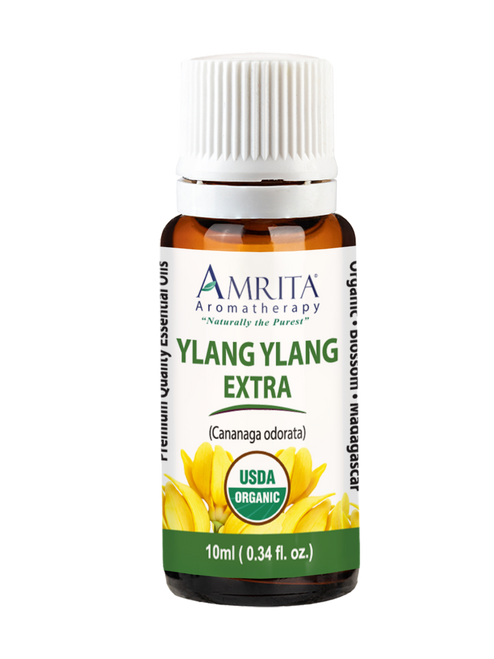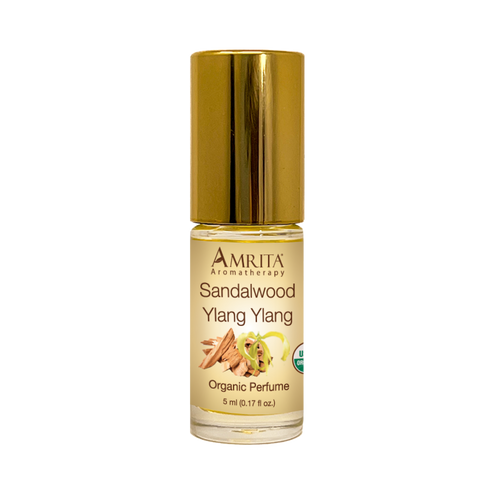- Other Names
- Flower of Flowers
- Farming Method
- Certified Organic
- Plant Part
- Blossom
- Country of Origin
- Madagascar
- Application Method
- Bath, Diffusion, Massage, and Topical
- Scientific Name
- Cananga odorata
- Extraction Method
- Steam Distilled
About the Plant:
The velvety yellow flowers produce a heady and sensual oil very similar to Jasmine. Like Jasmine and Rose, the blossoms are harvested and processed in the early morning. The spirit of Ylang Ylang Essential Oil is best described as radiant, passionate, and quintessentially feminine, so it is no wonder Ylang Ylang Essential Oil is revered around the world as an aphrodisiac, stirring the blood and engaging the heart and mind toward romance.*
Where It Grows:
The Ylang Ylang tree, which originated in the Philippines, belongs to the custard apple family. Today, it is also cultivated in Java, Sumatra, Comoro Islands, Zanzibar, Haiti, and Madagascar. In the Malayan language, Ylang Ylang means “flower of flowers”.*
This precious nectar is commonly distilled in fractions, meaning at various stages the oil is taken off and then the distillation continues, producing other grades of oil. After the oil classified as Ylang Ylang Extra is collected, the distillation process continues, creating Ylang Ylang 1, Ylang Ylang 2, and Ylang Ylang 3. The distillation details vary among distillers.
Traditional Uses and Lore:
In Indonesia, it is traditional for newlywed couples to find these blossoms spread on their marriage bed.* In its country of origin, the Ylang Ylang blossoms were immersed in coconut oil until it had absorbed all the fragrance. The oil was then used to prevent fever and infectious diseases.*
In Victorian times, Ylang Ylang Essential Oil was used as a hair treatment.* For those looking for the appearance of more lustrous hair, Ylang Ylang was diluted in carrier oils to stimulate and arouse the scalp with gentle massage.* In fact, it was popular in men’s hair tonics in the late 1800’s.*
Other Facts:
-
-
- Scent: Powerful Floral and Intensely Sweet Aroma
- Fragrance Note: Middle Note
- Composition: α-Methyl Ether Cresol, Linalool, Geraniol, Geranyl Acetate, β-Caryophyllene, and Germacrene D
- Family: Annonaceae Family
-
*These statements have not been evaluated by the Food and Drug Administration. These products are not intended to diagnose, treat, cure, or prevent any disease.
- USDA Certified Organic
- Boosts and Supports Healthy Moods and Blood Pressure
- Sensual Aroma
- Soothes Skin and Muscle Tissues
Ylang Ylang Extra Essential Oil has a slightly sweet and flowery aroma which makes it the perfect choice for perfumes. Pronounced Eee-lang Eee-lang, this euphoric oil is distilled from the flowers of a tree native to southeast Asia. This Essential Oil helps boost positive moods while soothing skin and muscle tissues.*
There are actually five different classifications or types of Ylang Ylang Essential Oil based on the time at which the oil is taken off (fractionated off) during the whole distillation process. When the steam distillation process begins, the oil that is collected within the first hour or two is called Ylang Ylang Extra which is often considered the best fraction for use in perfumery. The aroma is sweeter, fruitier, and has a very floral scent compared to other Ylang Ylang fractions. However, this fraction is the most volatile and can be overpowering in aroma to some.
Topical Application (for use on the skin):
|
||
|
||
|
Diffusion Application (add a few drops to a nebulizer):
- Nervous System:
- Uplifts Anxiety and Depression
- Alleviates Anger and Tension
- Helps Stabilize Mood Swings
-------------------------------------------------------------------------------------------------------------------------------------------------------------------
Blends Well With:
- Cardamom, Clary Sage, Nutmeg, Patchouli, and Rosewood.
-------------------------------------------------------------------------------------------------------------------------------------------------------------------
Safety Precautions:
-
- Ylang Ylang Extra Essential Oil is non-toxic and non-irritant, with possible sensitization.*
- Use in moderation.*
- Excessive use could cause headaches and nausea.*
- Ylang Ylang Extra Essential Oil is non-toxic and non-irritant, with possible sensitization.*
General Safety Precautions:
-
- Use Essential Oils only in diluted form on the skin and never internally.
- Always be careful when using Essential Oils with children.
- Give them only low doses, or better, consult a qualified aromatherapy expert before using.
- Also, use Essential Oils with care and only under the proper guidance of an expert while pregnant or if you have liver damage, epilepsy, cancer, or other serious health problems.
*These statements have not been evaluated by the Food and Drug Administration. These products are not intended to diagnose, treat, cure, or prevent any disease.
Ylang Ylang Extra is an uplifting and soothing oil to help the nervous system, the circulatory system, and the integumentary system.* It influences moods by providing support to your emotional well-being.* Ylang Ylang Extra can also help you deal with stressors in life such as anger or anxiety.*
The circulatory system is the lifeblood of our body, without it we would not be able to live.* However, with a rapid heartbeat and high blood pressure, the body could have more issues.* Ylang Ylang Extra has soothing and sedative properties that calms the circulation of your blood.* Not only does it help the heart, but it eases muscle spasms that relax tense muscles.*
Your skin is the body's largest organ and protects from various environmental elements such as dirt or pollution, but sometimes it needs help to stay balanced.* Ylang Ylang Extra can help by reducing skin inflammation and clearing skin imperfections.* Lastly, this magical Essential Oil can be used with a carrier oil to produce a hair tonic to support a healthy scalp.*
The following is a list of conditions which Ylang Ylang Extra Essential Oil addresses by category:
|
|
|
*These statements have not been evaluated by the Food and Drug Administration. These products are not intended to diagnose, treat, cure, or prevent any disease.
Bottles are filled by volume. Some bottle sizes may not be filled to the top, but do contain the volume of oil specified.
|
Click the links below to view GC Analysis:
|
Click the links below to view CoA Analysis: |
|
Click the link below to view Safety Data Sheet (SDS): |











